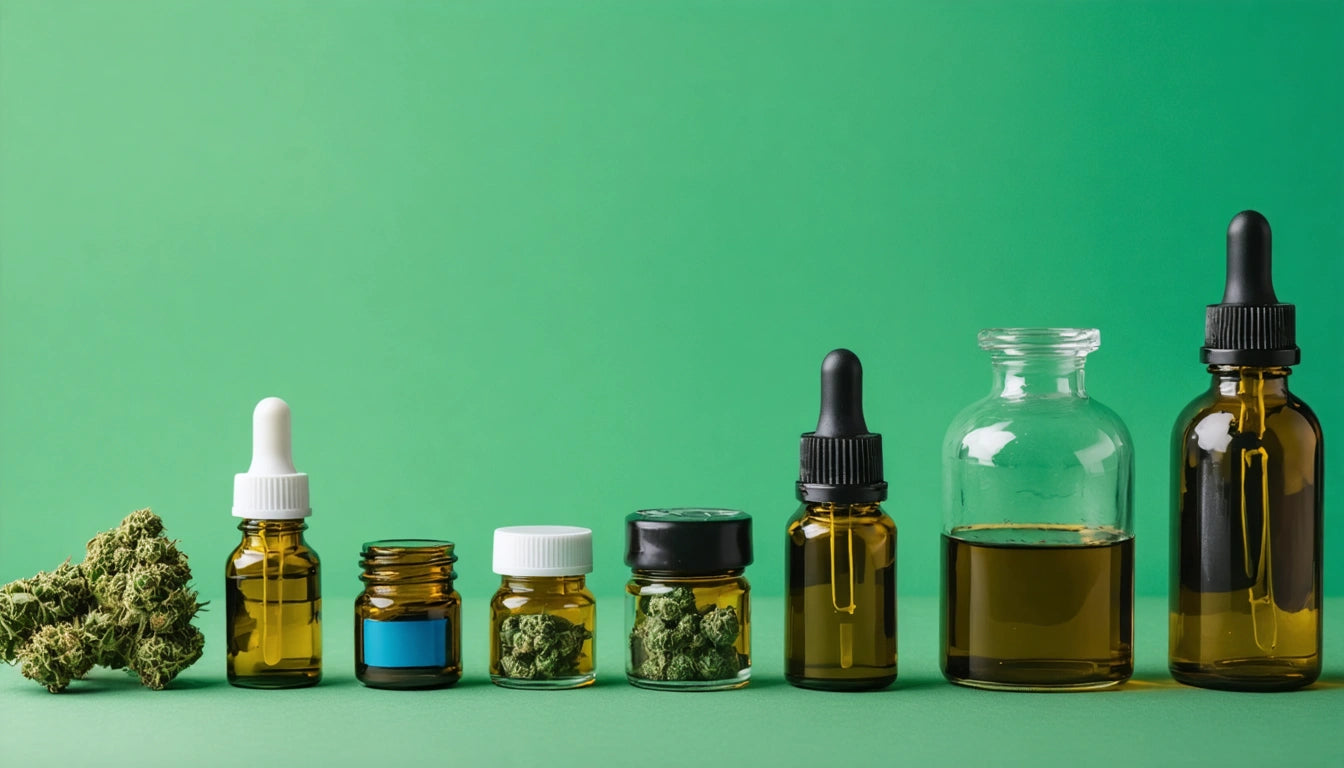Table of Contents
Terpenes play a crucial role in cannabis products, contributing to aroma, flavor, and potentially therapeutic effects. As the cannabis industry evolves, manufacturers face an important choice between botanical and synthetic terpenes. Each option presents distinct advantages and limitations that impact product development, consumer experience, and production costs.
Understanding Terpenes: Nature's Aromatic Compounds
Terpenes are aromatic compounds found naturally in many plants, including cannabis. They're responsible for the distinctive scents and flavors we associate with different cannabis strains. According to this overview of terpenes, these compounds may also contribute to the plant's effects through interaction with cannabinoids.
The most common cannabis terpenes include myrcene (earthy), limonene (citrus), pinene (pine), and linalool (floral). Each contributes unique characteristics to the overall experience, as detailed in this guide to common terpenes.
Botanical Terpenes: Natural Complexity
Advantages of Botanical Sources
Botanical terpenes are extracted directly from plants. Cannabis-derived terpenes come from the cannabis plant itself, while plant-derived terpenes may come from other botanical sources like fruits, herbs, and trees.
- Full spectrum profile with minor compounds intact
- Potential for enhanced entourage effect
- Authentic, complex aroma profiles
- Marketing appeal of natural ingredients
Limitations of Natural Extracts
Despite their authenticity, botanical terpenes present several challenges:
Batch variation can be significant, making consistency difficult to maintain. Extraction methods significantly impact quality, with some processes potentially damaging delicate terpene compounds. This article on extraction methods explores how different techniques affect terpene retention.
Synthetic Terpenes: Laboratory Precision
Benefits of Laboratory Production
Synthetic terpenes are created in laboratories through chemical processes that replicate the molecular structure of natural terpenes.
- Consistent batch-to-batch profiles
- Customizable formulations
- Generally lower production costs
- No seasonal availability constraints
For manufacturers focused on product consistency, synthetic options can ensure that customers have the same experience with every purchase. This consistency is particularly important for brands using specialized packaging for cannabis flower products where terpene preservation and consistent product experience are key selling points.
Drawbacks of Synthetic Alternatives
The primary concerns with synthetic terpenes include:
Potentially simplified aroma profiles that lack the complexity of botanical sources. Some consumers report different subjective effects compared to natural terpenes. There may be reduced entourage effect potential, as discussed in this analysis of the entourage effect.
Comparing Cost and Accessibility
Cost considerations often drive decisions between synthetic and botanical terpenes. Synthetic versions typically cost 30-50% less than cannabis-derived alternatives. This price difference becomes significant in large-scale production.
However, accessibility factors extend beyond price. Cannabis-derived terpenes face regulatory hurdles in some markets, while plant-derived and synthetic alternatives may offer easier procurement paths with fewer legal complications.
Flavor Profile Differences
The sensory experience represents perhaps the most noticeable difference between synthetic and botanical terpenes. Botanical versions, especially cannabis-derived ones, tend to provide more complex, layered aromas with subtle notes that synthetic versions may not capture.
Expert extractors and processors can identify these differences, though average consumers might not detect them. For products where flavor is paramount, such as vape cartridges or edibles, these distinctions become particularly important. This guide to cooking with terpenes explores how these flavor differences impact culinary applications.
Entourage Effect Considerations
The entourage effect theory suggests that cannabis compounds work synergistically, potentially enhancing therapeutic benefits. Botanical terpenes, especially cannabis-derived ones, may contribute more effectively to this phenomenon due to their natural co-evolution with cannabinoids.
Research in this area remains limited, but some evidence suggests that full-spectrum botanical extracts may provide different effects than isolated compounds. Manufacturers focused on medicinal applications often consider this factor when selecting terpene sources.
Understanding terpene profiles has become increasingly important, with lab testing now standard in many markets. These reports help producers and consumers alike understand the potential effects of different terpene combinations.
Industry Applications and Future Outlook
Different cannabis product categories have adopted varying approaches to terpenes:
- Vape manufacturers often use blended approaches, combining synthetic bases with botanical accents
- Premium flower brands typically emphasize strain-specific botanical terpenes
- Edibles producers frequently utilize synthetic options for consistency and heat stability
- Concentrates may preserve natural terpenes or reintroduce them post-extraction
The future likely holds more sophisticated hybrid approaches, with manufacturers selecting specific terpenes from both synthetic and botanical sources based on their unique properties and production requirements. As terpene testing becomes more advanced, these decisions will increasingly be guided by data rather than tradition or assumption.
The ongoing development of strain matching technology based on terpene profiles suggests that precision formulation will continue to advance, potentially blurring the line between synthetic and botanical sources as hybrid approaches become more sophisticated.











Leave a comment
All comments are moderated before being published.
This site is protected by hCaptcha and the hCaptcha Privacy Policy and Terms of Service apply.